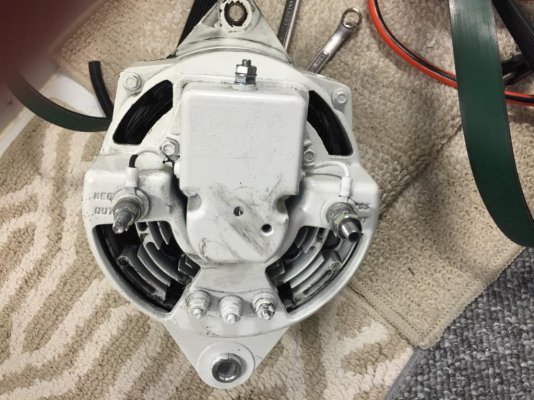In my 2006 Mainship 400 I have a single 2006 QSB 5.9 380 HO with what looks like the standard Delco alternator. The electronic display shows it to be putting out a fixed 13.1 volts. I have an 8D AGM deep cycle start battery and 2 8D AGM deep cycle house batteries. They should be charged at 13.5 volts float voltage.
1) Is there a standard Cummins alternator and regulator that would allow for adjustable output voltage? Even better an external smart regulator that would quick charge the batteries through bulk charging before settling down to the float voltage?
2) A respected after market direct fit?
3) The start battery is connected to the house with a Blue Seas 120 Amp ACR automatic charging relay. The alternator output is going to the start battery. Does it make sense to have the output go directly to the house bank where (voltage would be lowest and) it should be most needed? Any tricks or traps in moving the alternator output to the house bank?
Many Thanks Paul
1) Is there a standard Cummins alternator and regulator that would allow for adjustable output voltage? Even better an external smart regulator that would quick charge the batteries through bulk charging before settling down to the float voltage?
2) A respected after market direct fit?
3) The start battery is connected to the house with a Blue Seas 120 Amp ACR automatic charging relay. The alternator output is going to the start battery. Does it make sense to have the output go directly to the house bank where (voltage would be lowest and) it should be most needed? Any tricks or traps in moving the alternator output to the house bank?
Many Thanks Paul

